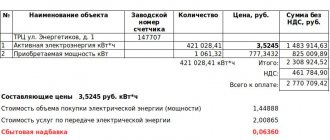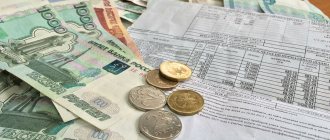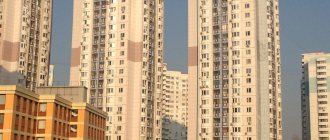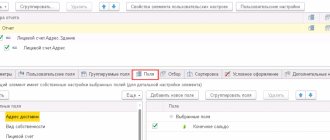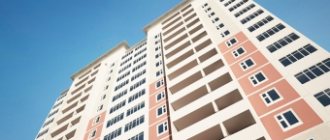What does ODN mean for electricity?
Electricity costs for general house needs (GDE) consist of several factors. This includes lighting of the local area, staircase landings, maintenance of elevator facilities, etc. All this adds up to considerable costs for MKD.
What are the standards for electricity consumption at the ODN used for settlements with the energy supply company? The fair redistribution of electricity costs between apartment owners depends on how the charging system is structured.
Previously, management companies (MCs) of apartment buildings paid for ODN with funds accumulated by subtracting amounts from utility payments of homeowners. It was practically impossible to control the correctness of the accrual of one-time income tax to each owner. Unscrupulous administrators of the management organization took advantage of this, committing fraud with funds.
Starting in 2021, new ODN standards for electricity were introduced. They were determined by calculation, which is closest to the actual electricity consumption for general household needs.
The articles of the new Federal Law (Federal Law) remove from circulation fraudulent schemes that were used to unjustifiably increase the costs of one-way electricity supply, in contrast to the real ones. Cash withdrawals were made from payments made by residents not only in the city, but also in large populated areas throughout the Russian Federation. Innovations forced management administrations to take into account strict rules for accounting, monitoring and saving electricity.
Legal basis of ODN
Communal general house needs are regulated by the provisions of several legal acts.
These include:
- Housing Code of the Russian Federation;
- Decree of the Government of the Russian Federation No. 354 of 2011 “On the provision of utility services...”;
- Federal Law No. 261 of 2009 “On Energy Saving...”;
- Government Decree No. 491 of 2006 “On approval of maintenance rules...”.
The listed acts reflect the definition of the term in question and fix the fees for the services provided.
Determining the needs of a common house type
Speaking about what is included in the ODN, we first need to derive a definition of this term.
The concept is reflected in Government Decree No. 354 of 2011.
Needs should be interpreted as costs of resources aimed at providing premises located outside the apartments with the necessary goods. For example, these funds are used to repair objects classified as common: entrances, elevators.
Costs are calculated using a simple formula, where the basis is the volume of services consumed for a certain period. Indicators are established using special equipment.
What is included in the ODN
What is commercial electricity metering
The structure of ODN includes all electricity costs, except for residential consumption:
- electric lighting of stairs, platforms, access vestibules and common corridors;
- light in basements and attics;
- power supply for elevator facilities;
- connection and operation of video cameras and intercoms;
- maintenance of fire alarms, pumps and other electrical equipment for public use;
- losses in household networks.
Network losses
Electricity losses in networks are considered to be the difference between the incoming volume of electric current and its recorded consumption inside the house. Losses are borne by additional payment to the electricity distribution company. Reasons causing intra-house current leakage:
- Incorrect selection of wire cross-sections causes thermal losses of electricity in the electrical wiring conductors.
- Poorly assembled contact groups of switches, lamp sockets, switches, sockets, etc.
- Operation of old electrical equipment.
Losses in networks can be reduced only by replacing old electrical wiring with new wires, the cross-section of which corresponds to the load, as well as by replacing worn-out electrical equipment with more modern devices.
Taking readings from the electric meter
Payment for one day
Electricity consumption standards per person without a meter
In addition to making payments for consumed electricity according to the readings of individual electricity meters, residents of apartment buildings bear the cost of electricity consumption. A special line ODN is included in receipt books for utility services for homeowners.
Payment for consumed electricity according to ODN for one apartment in a multi-storey building is determined by the formula:
Pi=Viodn NS,
Where:
- Viodn – the share of ODNE per apartment.
- N – standard (kWh/1m2), approved by local authorities;
- S – total area of the apartment.
Over the past few years, homeowners of some apartment buildings have begun to notice an unreasonable increase in the amount of payments for electricity bills. This is due to the fact that between the direct consumer and the supplier of electric current there is an intermediary - the management company (MC) of the MKD.
How to calculate general house needs
The standard for electricity and other resources is taken into account when calculating the ODN. The formula for calculating this indicator is prescribed in Government Decree No. 354 of 2011.
The calculation is affected by how the household needs are recorded. Not all buildings have hot water and electricity is taken into account when using special devices.
Calculation of ODN without metering devices
Speaking about how general house needs are calculated in a situation where the building is not equipped with metering devices, several aspects need to be taken into account.
These include:
- standards established by regional authorities;
- room area;
- general dimensions of the building;
- size of technical and residential facilities.
Non-residential premises, as well as other types, require the use of a formula for calculating ODN.
N = (OPK/RZ)*NP*OP+IP , where
- N – the value of general house needs;
- OPK – total size of the room;
- RZ – building size;
- NP – consumption standards;
- OP – total area;
- IP is an individual indicator.
The amount received for utilities provided for general house use is written down in the receipt.
Standards for ODN for electricity in the regions of the Russian Federation
Introduction to peak and other electricity tariff zones
The size of the standard depends on the quality of the electrical equipment of the house and its number of floors. Standards in each region of Russia are set by local authorities. They represent a single value per 1 m2 of area, relating to communal premises and local areas.
The new rules for calculating ODNE practically exclude unauthorized increases in the amount of payment for this expense item. Previously, the management company itself made payments to the energy supply company, but now the costs of ODNE are borne by the apartment owners according to a special line in the receipt. The calculation of this expense item is based on the standard adopted by the regional state administration.
There is no uniform standard for ODNE for MKD across the country. In different territorial entities of the Russian Federation, indicators vary greatly. To calculate ODN, you need to take into account a number of factors:
- number of floors of apartment buildings;
- the presence or absence of an elevator, house electric boiler, pumps, lighting of the local area, etc.;
- whether ODPU (common house metering devices) is installed or not;
- local tariff for ODNE.
Based on these data, a standard is formed, on the basis of which LTNE is calculated in the receipt. Since the beginning of 2019, people have been paying for electricity supply according to regional standards. Now, if electricity consumption is less than the standard, then payment is made based on consumption. Below is a table of standards in some regions and republics of Russia, established by local authorities from 01.01. 2021
Table of standards for ODNE
| Regions | Standard ODN, kW/h per 1 m2 per month | |
| MKD without elevator | MKD with elevator | |
| Moskovskaya (Moscow) | 2,88 | 0,61 |
| Leningradskaya (St. Petersburg) | 1,66 | 0,42 |
| Nizhny Novgorod (Nizhny Novgorod) | 1,6 | 0,39 |
| Sverdlovskaya (Ekaterinburg) | 4,16 | 1,96 |
| Saratovskaya (Saratov) | 2,44 | 1,82 |
| Novosibirsk (Novosibirsk) | 0,973 | 0,728 |
| Lipetskaya | 1,24 | 0,37 |
| Rostovskaya (Rostov-on-Don) | 2,24 | 0,55 |
| Yaroslavskaya (Yaroslavl) | 1,01 | 0,646 |
| Republic of Crimea (Simferopol) | 0,58 | 0,21 |
| Krasnodar region (Krasnodar) | 1,412 | 0,322 |
| Republic of Bashkorstan (Ufa) | 0,791 | 0,295 |
| Republic of Adygea (Maykop) | 1,357 | 0,315 |
Payment for general house needs in 2021
General household needs have recently been listed not as utilities, but as housing services. This change in status led to changes in payment for housing and communal services. What are the features of ODN in 2021?
In 2021, the implementation of the bill regarding payments for general household needs began.
In receipts, the payment for single-use services is now indicated in the line about the maintenance of housing, and not in the line about utility services, as was previously the case. What are the features of general house needs in 2021?
Basic moments
Starting from 2021, payments for general household needs are calculated according to new rules. This innovation is due to the need for calculations taking into account real consumption.
According to the legislator, changing the status of the service will allow payments to be made only for actually used resources.
The new calculation algorithm was introduced gradually. While preparing for the transition, owners and service companies had to prepare for changes in payment.
In particular, management companies had to inspect each house, detect cases of misuse of utility resources, and carry out work to improve energy efficiency.
From 2021, receipts include common household needs in the fee for the maintenance of common property.
What it is
The ODN payment is calculated based on the readings of common building meters installed in most apartment buildings, in comparison with the readings of individual meters.
ODN represents the difference between the readings of personal meters installed in residents’ apartments and common building meters in apartment buildings.
When a meter is not installed in the apartment, the amount of resources consumed is calculated as the ratio of the apartment area to the sum of all areas of the common property.
If we talk about the purpose of ODN, then these are utilities necessary to maintain the normal functioning of the entire apartment building.
The revision of the calculation of one-time income is explained by the fact that many management organizations began to write off their own debts to resource suppliers and other third-party costs in this section.
What are they made of?
Most of the owners do not understand enough what is included in the general needs of the house. The general idea is that ODN is only for lighting and heating the entrance.
In fact, in addition to the listed costs, the RDN includes the following costs:
Electrical supply for common building equipment and common areas
Water supply for the maintenance and operation of the heating system Washing and cleaning of common areas, care of the local area
It is strictly prohibited to include other resource expenses in the ODN. Residents should not pay more than normal for general household needs.
In practice, it looks like this: if part of the energy resources is lost during delivery to the end consumer due to the fault of the management company, then the costs are paid by the management organization.
Legal regulation
Federal Law No. 176 was adopted by the State Duma of the Russian Federation in the summer of 2015. The purpose of the law is positioned as creating conditions for more efficient work in the housing and communal services industry and improving payment discipline.
The consequence of the law was to charge for the use of communal services used for the common property of apartment buildings, based on the actual amount of consumption, calculated according to specially defined standards.
Currently, the following regulations apply to charging fees for one-way traffic:
Federal Law No. 261 “On Energy Saving”;
Decrees of the Government of the Russian Federation No. 344 and No. 354, including annexes to them, concerning the provision of utility services to residents of apartment complexes;
Federal Law No. 176 dated June 29, 2015.
Innovations have led to the disappearance of the line about ODN from payment receipts. The reason was the growth of social tension among the population and the refusal of many owners to pay incomprehensible expenses.
From 01/01/2017, the payment for one-way service is included in the payment for the maintenance of common property. The list of resources spent on general needs is included in Part 2 of Article 154 of the Housing Code of the Russian Federation.
To apply the new procedure, the Government of the Russian Federation made changes to the “Rules for the provision of public services ...”, approved by Decree of the Government of the Russian Federation No. 354 of May 6, 2011.
Emerging nuances
How is the ODN fee calculated in 2021? There are two calculation options. The main criterion is the presence/absence of a common house metering device in the apartment building.
In both cases, the volume of resources spent on general house needs is first calculated, and then the resulting value is distributed among the personal accounts of residential and non-residential premises.
If the MKD is equipped with a counter, then the value of ODN is calculated as the difference between the readings of the general and individual counters.
The identified difference is divided between all residents of the house in proportion to the area of the occupied apartments.
If there is no meter in an apartment, then the calculation is carried out using standard indicators for the consumption of resources for each registered resident and the area of the premises.
When an apartment building does not have a common building meter, the volume of the ODN is determined by multiplying the standard established by local authorities by the total area of the building.
Applicable regulations may vary by region. Among the nuances of the new order, it should be noted that now management organizations are required to independently pay for overexpenditure of resources.
This will lead to the fact that management companies will be more interested in the timely elimination of accidents and will begin to more carefully monitor overruns.
Consumption standards
To calculate the payment for ODN at the level of constituent entities of the Russian Federation, consumption standards must be approved. To determine the correct values, experts collect readings from hundreds of thousands of objects.
In particular, the volume of received resources according to the general counter and the volume of individually spent resources according to personal counters are taken into account.
The difference is considered to be the volume of communal resources that is necessary to maintain the common property of the apartment building. Comparing the results of all inspected houses allows us to determine the average indicator and approve it as a single standard.
Land plot for combat veterans About the allocation of land plots for combat veterans, see the article: land plot for combat veterans.
Read here how to spend maternity capital on apartment renovations.
Some issues related to the new procedure regarding ODN were clarified by the Ministry of Construction of the Russian Federation. So, when including ODN in the housing services of management companies (housing complexes, HOAs, etc.), they should be guided by Part 10 of Article 12 of Federal Law No. 176 of June 29, 2015.
In fact it looks like this:
The actual amount of resources spent on the maintenance of common property is presented for payment.
The obtained value is compared with current standards
If the actual volume exceeds the standard, then the difference is paid at the expense of the management company
Residents of apartment buildings Pay for services within the approved standards
Electricity
There is no uniform national standard for electricity consumption for apartment buildings. Determining the indicator depends on many factors, for example:
Floors of the house -
Presence/absence of an individual heating point
elevator
pumping equipment
lighting of the entrance and adjacent areas
Equipment of the house with a common house metering device
If we compare the standards approved for 2021 in different regions, the values turn out to be very different. For 1 sq.m. The standard for electricity consumption according to ODN ranges on average from 0.6 kW/h to 7 kW/h.
To reduce the payment for one electricity tax you need to:
Install a communal meter, the cost of which pays off in a few months
Submit readings on individual meters in a timely manner, since the absence of real values leads to the calculation of payment according to consumption standards
Monitor the work of Management Organizations
Take care of replacing the old wiring with a new one, which allows you to reduce energy losses to zero
What is water used for?
ODN costs for cold water include:
network cleaning;
losses inside the apartment building;
water consumption for general expenses for premises and adjacent areas.
One's expenses for hot water are spent on:
technological work related to ensuring the operation of the heating system;
water discharge during heating system repairs;
intra-house losses.
Official standards for cold water consumption according to ODN, using the example of the Stavropol Territory, range from 0.029-0.067 cubic meters per 1 sq.m.
This takes into account factors such as:
the presence of a drainage system in the apartment building;
availability of centralized water supply;
types of installed baths by volume, etc.
As in the case of electricity, the calculation of ODN for water supply is based on the difference in the readings of communal and individual meters.
Water disposal for general household needs in 2021 cannot exceed the volume of water spent on single-use water supply systems.
Other
In addition to electricity and water supply, the ODN includes heating fees, since heat must be maintained not only in apartments, but also in common areas of the house.
But in this case, it is impossible to determine using meters how much heat is spent on each room separately. In addition, heating is always a utility service.
Regardless of the method of managing the MKD, heat is paid for collectively without dividing into personal and general household consumption. This norm is enshrined in clause 40 of the Rules for the provision of public services.
To calculate the payment for heating as part of the ODN, a thermal energy consumption standard is used, which is multiplied by the area of common premises in the house. The resulting value is divided among all residents.
What are the tariffs for 2021?
Tariffs approved by regional authorities are published on the websites of management companies. Consumption standards for ODN are also subject to publication.
This way, every citizen can check the correctness of payment calculations. Thanks to this, the calculation of payments for utility services becomes more transparent.
The owner of a premises in an apartment building, knowing the tariffs for utility resources, can independently calculate the fee for personal consumption of resources.
Knowing the standard for ODN, you can compare the declared fee for general household expenses and determine whether it meets the standard or exceeds it.
In 2021, the Government approved an increase in housing and communal services tariffs. But taking into account the crisis in the economy, the increase in tariffs will be very moderate.
It is expected that from July 1, tariffs will increase by 2.5-7.5% depending on the specific region.
How are volumes calculated?
Calculation of the volume of ODN in an apartment building depends, first of all, on the presence or absence of common house metering devices.
If a common counter is present, the calculation of one will be as follows:
Readings from the common house meter are taken.
Individual meter readings are taken.
The difference in values is determined.
The excess readings of the general building meter are divided by the number of apartments in proportion to the area of the premises.
The resulting indicator is compared with the standard consumption of ODN.
If the amount of one tax does not exceed the standard, then it is fully included in the payment for housing maintenance.
When the calculated indicator turns out to be higher than expected, then residents pay ODN according to the approved standards, and the balance is paid by the management organization.
In the absence of a general house meter, the procedure is almost the same, but in this case, consumption volumes are calculated according to the standards per person or volume of area.
How to calculate ODNE in MKD using a meter
Homeowners in apartment buildings are often interested in how to calculate the ODN on their own. The calculation is simple. The total area of the apartment building, including communal areas and apartments, is taken as a basis. The established tariff of a specific region is entered into the calculation. The readings of the ODPU and individual electricity meters are taken into account.
If there is no communal meter in the apartment building, then the calculation is carried out according to another option. Below are examples of calculations of ODN for electricity.
Example of calculating ODN
Examples of calculating the ODN of a multi-storey building
There are two formulas for calculating how to pay for one electricity supply. One of them is an option for calculating ODN without a common house electricity meter.
Without counter
Calculate the amount of energy spent on one unit without a meter using the formula:
Viodn = N one x Soi (Si/Sob),
Where:
- N one – consumption rate established by local authorities;
- Soi – communal area;
- Si – apartment area;
- Sob – the entire area of the house.
The management company, which has calculated the amount of energy, multiplies it by the tariff.
With counter
The second formula for calculating ODN for electricity is based on the readings of a common house electricity meter:
Vi = (V d – V tender – V core b – V core – V cr),
Where:
- V d – readings of the common house meter;
- V nezh – electricity consumption in communal premises;
- V lived b – consumption in apartments without an electric meter:
- V lived - the same with the counter;
- V cr – electricity consumption for additional services.
Important! Whether it is necessary to install a common house electricity meter will be shown by a comparative analysis of the costs of one electricity meter if it is present or not. The result will always be in favor of installing a common house meter.
Testimony must be submitted on time
Explanation of cold water supply, hot water supply and single use in the payment receipt
Payments collected for the provision of housing and communal services are fixed by Article 154 of the Housing Code of the Russian Federation.
A citizen who owns an apartment or has rented residential premises undertakes to make payments for hot and cold water, heat and electricity supply, gas supply and wastewater disposal, if he uses these services.
All of the above services are encrypted in the payment receipt in the form of abbreviations. This is done to make the document easier to read.
The following abbreviations are distinguished:
- Cold water supply - cold water supply;
- DHW – hot water supply;
- ODN - common house ones are needed;
- DPU – house metering device;
- KPU - apartment metering device;
- and others.
If you see the abbreviation HVS DPU on your payment receipt, it means the calculation of the amount required to pay for cold water supply, determined using the readings of a common house meter.
If the measuring equipment is installed directly in your apartment, the receipt should have a different abbreviation - HVS KPU.
In other words, the calculation of the amount required to pay for consumed cold water is based on the data of the individual apartment meter.
If the volume of one is negative
A negative value of one tax for electricity is added up if the general building meter records the consumed volume of electricity less than the summed readings of apartment meters. This is due to the lack of electricity meters for several homeowners who pay ODNE according to the standard.
The electricity supply company compensates for the negative balance by recalculation, based on the number of residents or the total area of each apartment. This system for calculating ODN for electricity is approved by Article No. 354 of the Government Decree.
Example of calculating a negative balance
Over the course of a month, the difference between the data from ODPU and all MKD electricity meters was 150 kW/hour. The number of residents is 200 people. The difference is distributed per 1 person: 150/200 = 0.75 kW/h. The result obtained is multiplied by the number of residents of each apartment. If 3 people live in it, and the current electricity consumption is 150 kW/h, then 150 will be counted: (0.75 x 3) = 147.75 kW/h.
How to calculate one rate for electricity
ODN for electricity is calculated in accordance with tariffs and standards approved by the regional government for each region. However, despite the difference in tariffs, the formula for calculating the one-time tariff for electricity is currently the same for everyone.
1. First of all, to calculate ODN, readings from the common house meter are taken. The house-wide meter records how much electricity was supplied to the house during the reporting period.
For example, let’s imagine that a common house meter showed that the house consumed 5,500 kWh during the current billing period. This is the total amount of consumption, which includes both individual consumption by residents and consumption for general household needs.
2. After the readings of the common house meter are taken, they are compared with the readings of individual metering devices. To do this, all the testimony that was given by the residents of the house is summed up. Typically, the period for collecting electricity readings is from the 23rd to the 25th of each month. Restrictions on the dates for taking readings are necessary to ensure that readings are taken as simultaneously as possible, which reduces discrepancies when balancing the balance of the house.
Let’s assume that the sum of all IPUs is 4,500 kWh. This is the amount of electricity that was consumed by apartment residents for personal purposes.
It is worth noting that today the collection of testimony from residents is becoming increasingly rare as a result of its extreme inefficiency and the inability to exclude the “human factor”. Judge for yourself:
- Residents do not always give evidence. Someone forgets, and someone goes on vacation or a business trip and does not physically have access to the meter. As a result, it is simply impossible to collect testimony from 100% of residents.
- The readings are transmitted with errors. Some people's eyesight fails, others their attention fails, and others simply have illegible handwriting. Therefore, when collecting testimony from residents, part of the testimony on the basis of which the calculation of payment for one-time tax is made is always erroneous. Not to mention the fact that unscrupulous residents may deliberately underestimate the readings of their metering devices.
- It takes hours, or even days, to process all the testimony received from residents, depending on how many houses and apartments the management company services. In light of the number of cases that require the attention of management companies, such time spent on processing evidence is simply irrational.
There are a number of other reasons why “manual” collection of readings is increasingly becoming a thing of the past, giving way to automated collection of electricity readings, which allows you to balance the entire house in 15 minutes with 100% accuracy.
3. After the residents’ IPU readings are collected and summarized, the resulting amount is subtracted from the general house readings. This makes it clear how much of the total consumption was spent by residents, and how much was spent on maintaining the common area of the building.
5,500 kWh - 4,500 kWh = 1,000 kWh. 1,000 kWh is the amount of electricity that was spent on general household needs during the reporting period.
4. In order to distribute the received ODN among the owners’ receipts, it is necessary to calculate how much general household expenses will be paid by each specific owner. This volume is calculated based on the area occupied by the owner. Therefore, to begin with, the ratio of one unit of ODN (in the case of electricity, this is 1 kWh) per 1 m² of living space is calculated.
For example, the living area of an apartment building is 5,600 m². In order to calculate the volume of one unit per 1 m², we divide the entire volume of one unit of 1,000 kWh by the entire living area of the house. 1,000 kW⋅h / 5,600 m² = 0.178 kW⋅h, this is exactly the volume of ODN per 1 m² of residential premises.
5. Having information about how much ODN is per 1 m² of residential premises, you can calculate how much ODN will be paid by each specific owner.
If the owner’s apartment has an area of 35 m², then multiplying the volume of one unit per 1 m² by this area, we get 6,230 kWh. This is the amount of ODN that will be paid by the owner with an apartment of 35 m².
6. Payment for ODN is calculated in accordance with the standards approved in the city or region.
If the electricity tariff is 5 rubles/kWh, then multiplying 6.230 kWh by 5 rubles, we get 31 rubles. 15 kopecks This is the amount of one tax paid by the owner with an apartment of 35 m².
The given formula for calculating ODN for electricity will be relevant if a common house meter is installed in the house. If a common house meter is not installed, ODN is paid according to the standards using increasing factors.
In the absence of a collective (common house) metering device for cold water, hot water, electrical energy and thermal energy (if it is technically possible to install such metering devices), the payment for utility services provided for general house needs for the billing period is calculated using the increasing factors provided for Rules for establishing and determining utility consumption standards approved by the Government of the Russian Federation, Decree of the Government of the Russian Federation dated 05/06/2011 No. 354
What to do if there is no meter
In the absence of a general electricity meter in the apartment building, the calculation of ODN is carried out in accordance with the approved new standards. The calculation formula looks like this:
Vodn = Nodn xSoi x (Sq/Sob),
Where:
- Vodn – electricity consumption in the apartment;
- Nodn – standard for 1 m2 of MKD area;
- Soi – common house area;
- Sq – apartment area;
- Sob – the sum of the areas of all apartments.
Having determined the share of ODN of each home owner, the management administration adds it to the data of the electric meter, if there is one. When there is no device, the share is added to the standard, which is reflected in a separate line of the ODN receipt.
What is the increasing coefficient for cold water supply on ODN?
The law obliges the installation of individual (IPU) or common house (ODPU) utility metering devices if the residential premises meet the appropriate technical specifications.
If they are absent in a building or apartment, an increasing factor is added to the housing and communal services consumption standards. For hot and cold water supply it is up to 1.6 since the beginning of this year.
An important condition for calculating this coefficient is the absence of a metering device in the apartment or house, if according to the technical characteristics it could be installed indoors.
If it was not technically possible to install such metering equipment, the amount of payment for the use of hot or cold water is determined according to the basic standard.
Which is more profitable: with or without a meter?
Practice shows that significant savings in energy costs come from installing electric meters. Calculations without a meter include a large reserve of excess electricity consumption.
If the apartment does not have a meter, then the owner of the apartment building needs to contact the energy supply company, for which a corresponding agreement is concluded. The owner of the apartment can purchase an electric meter himself or use the services of an electricity supplier.
The purchased model of the metering device must be certified by the manufacturer, which is confirmed by the accompanying documentation - the product passport. After contacting the management company with an application to install an electric current consumption meter, a decision is made to call an electrician.
Before installation, the debt for payment for electricity is paid off. The new meter has zero readings. If there is any data on the display, this is noted in a special document.
Who can change the meter on the landing from 2021
In apartment buildings, apartment electricity meters are placed in panel cabinets on staircase landings. Over time, electricity meters may break down. Such a meter is replaced by an electrician from the management administration. The specialist has the rights to inspect, install and repair electrical control equipment.
The owner of the home, having noticed a breakdown of the meter or a damaged seal, is obliged to urgently inform the management company about this. The master of this organization will dismantle the old device, install a new electric meter and seal it.
The electrician must be certified and have permission to carry out repair work on electrical equipment of the MKD. This is evidenced by the fact that the electrician has the appropriate certificate.
Note! If the meter is considered an appliance for individual use, then all costs for restoring the power supply to the apartment are borne by its owner. If the housing is listed as municipal property, then the replacement of the electric meter is carried out at the expense of the municipality.
How to reduce the value of ODN for electricity
The lion's share of electricity costs for one-room lighting is made up of electricity spent on lighting in entrances and adjacent areas. Then follow in descending order the energy costs of operating hot water supply and heating pumps, and the functioning of the elevator facilities. A small share of electric current costs is occupied by connecting electrical equipment during repairs in non-residential premises of apartment buildings.
The desire of homeowners in an apartment building to reduce the cost of electricity distribution systems is understandable. Here are some tips on how to reduce them:
- Residents need to be proactive in preventing the lighting of the local area from being turned on during daylight hours.
- Turn off lights on staircases when not necessary.
- In order not to constantly control the switching on of lighting devices in the absence of people, it is necessary to install motion sensors.
- Residents need to know about unauthorized connections to the power grid by tenants of non-residential premises in apartment buildings. If such facts are confirmed, then it is necessary to oblige tenants to bear the costs of one-way electricity supply.
- Apartment owners do not have to delay submitting reports based on electricity meter readings. If payment terms are delayed, the management administration may transfer the owners of such apartments to standard payments.
How to reduce costs for ODNE
Additional Information. The installation of motion sensors in non-residential premises of apartment buildings in Germany became widespread back in the 90s of the last century. This gave a significant saving in electricity costs for apartment owners. Today, this method of saving ODNE in Russia is becoming very popular.
Application for recalculation of ODN
From 01.01. In 2021, new rules for calculating ODN for electricity came into force. Some unscrupulous management companies send payment receipts to the owners of apartment complexes, where the fees are calculated according to the old standards.
In order to return the illegally demanded fee or compensate this amount in subsequent payments, you need to contact the management company with an application for recalculation of the one-time tax in accordance with the new standards and tariffs.
The application is drawn up by the active owners of the apartment building. It indicates the amounts of payments under ODN for those months when accruals were not made in accordance with current standards. Along with this, the application indicates the actual calculation of the costs of one-way electricity supply for a given period. According to current legislation, the company administration is obliged to recalculate and compensate for unreasonable amounts of payments.
Receipt with a line for ODN for electricity
Establishing order in the charging of charges for electricity distribution units largely depends on the owners of apartment buildings themselves. At a meeting of residents, it is necessary to elect activists who would be able to monitor the readings of the ODPU and the readings of apartment electricity meters. As a rule, this method of action discourages the management company from abusing illegal charges for general house needs for consumed electrical energy.
About one
Expenses for paying for general house needs for electricity have increased, sometimes it comes out even more than for an apartment, why is this and what can I do to pay less?
Large ODN can be accrued in houses with a direct form of management, where there is no management company or HOA, or the form of management is not defined.
This is due to a change in legislation* - charges for electricity consumption for common house needs (CHN) in apartment buildings with a direct form of management (or, if the method of managing the house is not determined), from July 1, 2021, are made based on actual consumption. Previously, the calculation was limited by the standard. In some houses this has led to an increase in fees: if actual consumption exceeds the standard.
ODN is calculated as follows. From the expense of the general house meter, the amount of expense for apartment meters is subtracted (plus the standard for those apartments from which readings were not received), and the resulting difference is divided among all residents in proportion to the size of the area of each residential premises (apartment).
The debts of defaulters are not distributed to residents who pay for electricity in good faith. Debts remain on the debtor’s personal account, and only he must pay them off voluntarily or through the court.
The increase in ODN can be influenced not by debtors, but by situations where residents do not transmit electricity meter readings, transmit them irregularly, incorrectly, not in the period from the 23rd to the 25th. If the readings are not transmitted, for such apartments the calculation is made according to the average or standard, while the actual electricity consumption in the apartment may be more or less.
Let's consider the situations:
1. No one lives in the apartment, there is no electricity consumption, readings are not transmitted, the standard is calculated monthly. One day, the owner handed over the readings, or the controller took the readings, and it turned out that in fact no electricity was used. A recalculation is carried out: charges from this apartment are removed and redistributed to one apartment. Those. All other residents have a one-time increase in their daily living allowance.
2.Reverse situation. Consumption in the apartment is high, residents do not report readings, a standard is charged for individual consumption, which is much less than the actual electricity consumption inside the apartment. At the same time, the common house meter “counted” all the electricity that was used in the house. Accordingly, the ODN will increase for all residents.
3. Residents of an apartment building submit readings on different days of the month from the 10th to the 25th, and the readings of the common building meter are recorded on the 25th. If someone transmitted the data on the 10th, then until the 25th (especially in winter, when electricity consumption in apartments increases), he still uses a lot of kWh, which in this billing period will “fall” into one. Next month they will be returned to the apartment tenant, but “jumps” in the ODN in cases where the readings are transmitted unevenly are inevitable.
The same thing happens when readings are transmitted approximately, rounded up or down, or transmitted with errors.
Therefore, it is important for residents of apartment buildings to simultaneously and monthly, from the 23rd to the 25th, record the readings of all electricity meters in the house, and it is better to transmit them not to each resident separately, but in a list to an email address
The value of ODN can also be affected by electricity losses in the intra-house network, as well as the interference of residents in the operation of metering devices. In houses where there are management companies, management companies monitor the condition of the electrical wiring and take measures. If there is no management company, a direct form of house management is chosen, or not chosen at all, only the owners themselves can put the electrical equipment of the house in order. Since the apartment itself and the common property are their property, and the burden of maintenance, including common property, is placed by law on the owners. To do this, you need to unite, decide on financing and contact a specialized organization that will conduct an audit, identify possible unauthorized connections, evidence of interference with the operation of metering devices, and carry out the necessary work to eliminate the causes of high ODN.
But to begin with, it’s better to simply transmit electric meter readings to all residents. Readings taken at the same time from all electricity meters in the house most often help to reduce the cost of paying for one.
*Changes were made to clause 44 of the Government of the Russian Federation Resolution No. 354 (Resolution of the Government of the Russian Federation dated June 29, 2020 N 950).
Video
Coffee capsules Nescafe Dolce Gusto Cappuccino, 8 servings (16 capsules)
435 ₽ More details
Coffee capsule Nescafe Dolce Gusto Cafe O Le Coffee with milk, 3 packs of 16 capsules each
1305 ₽ More details
LCD TVs


